This Is What Insomnia Really Feels Like
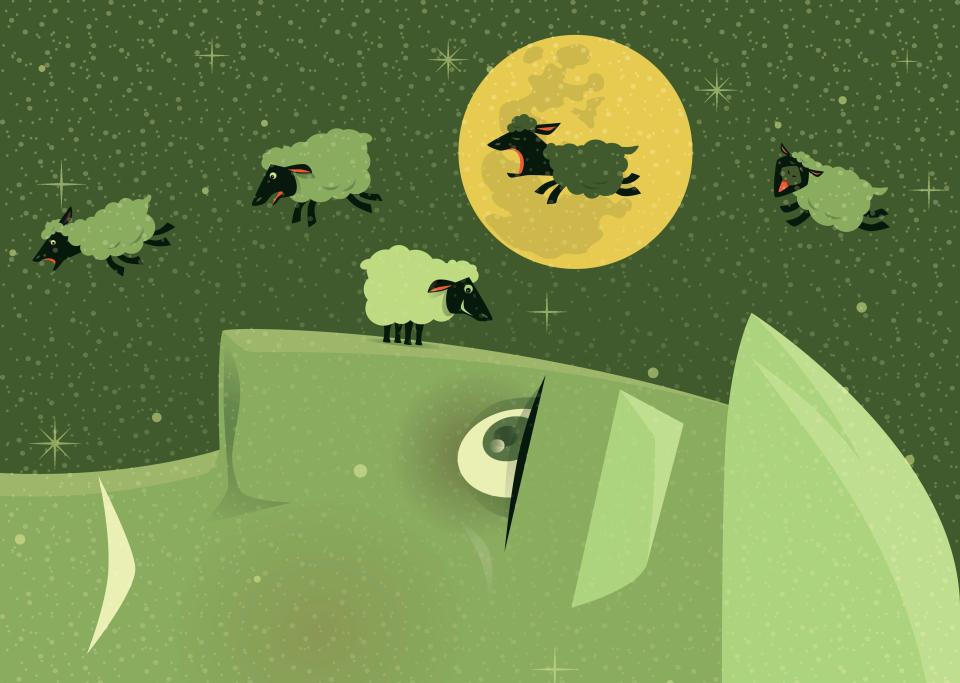
A sleepless night every once in a while is inevitable, and in fact, pretty common. Research from the University of Pennsylvania School of Medicine found that 25% of Americans experience acute insomnia every year, which was classified in the study as difficulty falling or staying asleep for three nights a week for at least two consecutive weeks.
Of those who experienced acute insomnia, 75% recovered their healthy sleep patterns within 12 months without developing other sleeping disorders or chronic insomnia (having trouble sleeping for three nights or more a week for longer than three months).
Here, sleep experts break down what insomnia actually feels like so you can know if rough nights are potentially something more serious (plus tips on what you can do about it).
You have difficulty falling or staying asleep
Insomnia presents itself differently depending on the person. While you might fall asleep instantly at night only to wake up alert at 1 a.m., someone else may climb into bed and not drift to sleep at all.
“Insomnia is defined as difficulty falling or staying asleep,” explained Brandon Peters-Mathews, a sleep medicine specialist at Virginia Mason Medical Center in Seattle. “It’s often characterized by spending more than 20 to 30 minutes trying to get to sleep.”
And if you wake up earlier than desired, that’s also a symptom of insomnia, according to Anita Shelgikar, acting chief of the Division of Sleep Medicine at the University of Michigan Sleep Disorders Center. (And by “early” we mean the middle of the night or before dawn, not 20 minutes before your alarm goes off.)
Any single symptom or combination of these symptoms can be a sign you’re suffering from insomnia.
You might be more irritable or anxious
“Mood and sleep walk hand in hand,” Peters-Mathews said. “Poor sleep can contribute to mood disorders like anxiety, depression and irritability. This relationship can become a vicious circle that worsens sleep.”
This is where it can get tricky ― pinpointing whether you think you’re suffering from insomnia or anxiety ― especially because anxiety tends to exacerbate insomnia.
“The difference between anxiety related to insomnia versus generalized anxiety is that insomnia-related anxiety typically relates to sleep,” Shelgikar said.
In other words, if you constantly think about things like, “Am I going to be able to fall asleep tonight?” or “What happens tomorrow if I don’t get enough sleep?” then your anxiety is likely a product of your insomnia, versus experiencing generalized anxiety. Even so, Shelgikar said often any type of anxiety and insomnia need to be addressed in parallel for someone to get the most benefit out of treating their sleep issues.
In addition to putting you in a poor mood, Peters-Mathews said, insomnia can cause daytime fatigue, trouble concentrating and poor short-term memory. That means your brain will be fuzzy and you’ll likely find you’re completely off your A-game when it comes to work and your social life.
Insomnia usually starts from one of three main causes
Shelgikar said there are three main factors sleep experts often think about when it comes to dealing with insomnia (referred to as the three Ps). The first is predisposing factors ― a genetic link or underlying medical condition that may make some people more prone to insomnia than others. Precipitating factors are major or stressful life changes or events that may cause insomnia to occur, and perpetuating factors are things we tend to do in bed that we think will help us relax and sleep (say, scrolling through your Instagram feed minutes before bed) that actually prevent you from falling asleep easily.
“It’s also important to remember that our sleep needs change throughout our life,” Peters-Mathews said. “And adjustments need to be made to reduce wakefulness at night.”
Women especially may be at additional risk for developing insomnia due to hormone shifts like menopause, he added. This is all to say that if working on your computer late at night or having sporadic bedtimes never affected your shut-eye in your 20s and 30s, that doesn’t mean it isn’t the culprit now. You may need to shift your pre-bedtime habits to ones that are more sleep friendly.
Pay attention to the length of your symptoms
“Some people do have periods of insomnia that are relatively short-lived while others have insomnia that evolves over time and is persistent,” Shelgikar said. “There may have been an original trigger ... but there are other things that have contributed to the situation to make [the insomnia] more ongoing.”
This is what makes it so important to keep tabs on your sleep. Having a few nights of bad sleep or even a week or two that then subsides is nothing to be overly alarmed about. But if you find that at least three times a week for three months or more you have trouble sleeping, see a doctor. They’ll be able to refer you to a sleep specialist who will get a detailed health history that will help guide their treatment plan for you. Soon you’ll be able to get your sleep back on track for good.
Related Coverage
Read This If You Take Benadryl To Help You Sleep
Do You Have A Sleep Disorder Or Just Bad Sleep Habits?
Why You Can't Sleep Without A Blanket Or Sheet, Even If It's Hot AF
Also on HuffPost
Standing Forward Bend (Uttanasana)
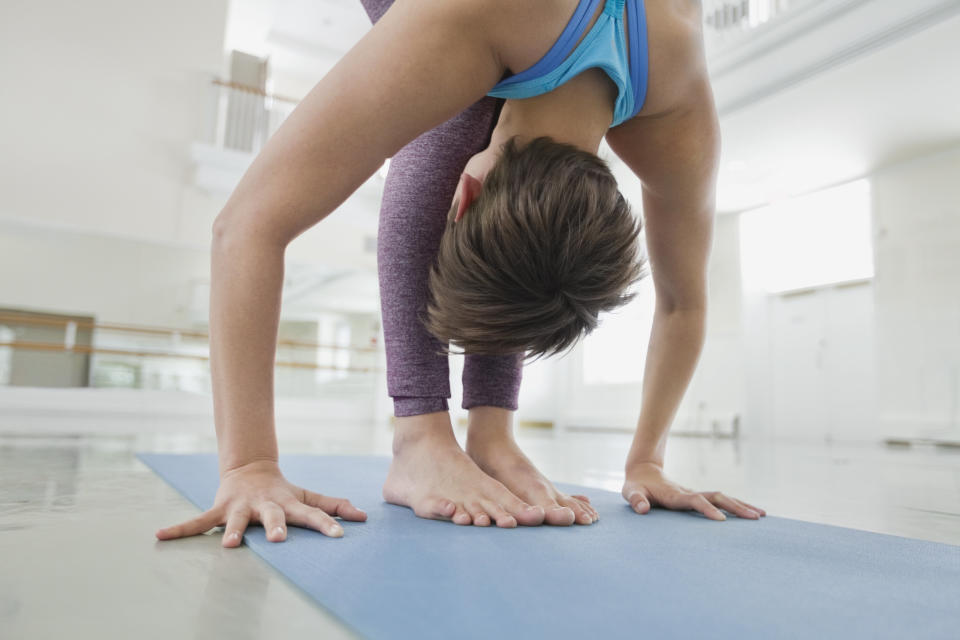
"Sway a little side to side and breathe," says Bielkus. "Bend the knees as much as needed to ease any strain. Tension in the legs and hips will start to release."
Plow Pose (Halasana)
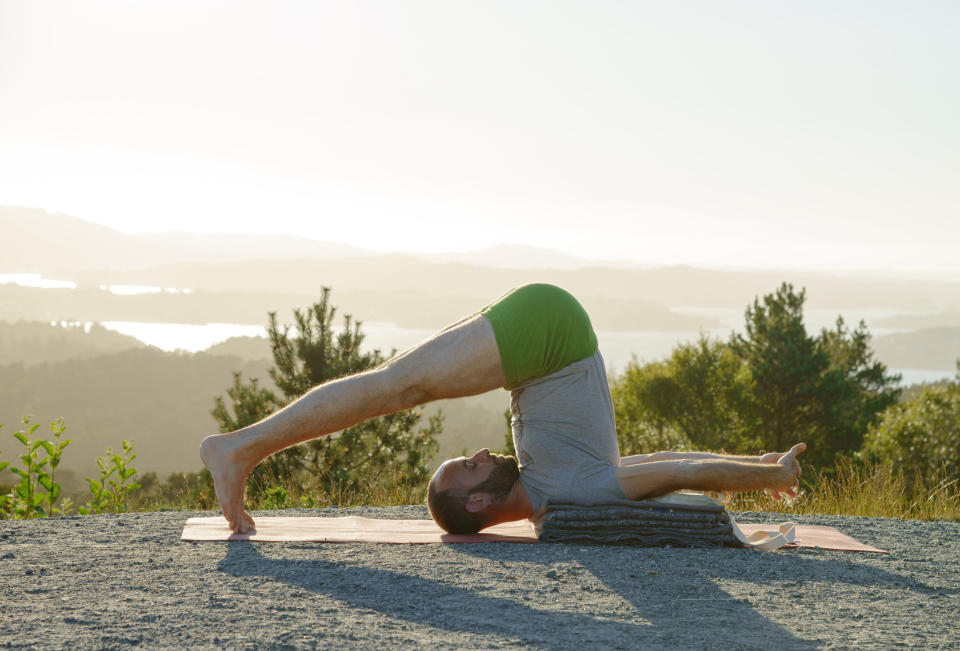
"By turning the flow of blood around, you bring new vitality into the body," says Bielkus.
Legs Up The Wall Pose (Viparita Karani)
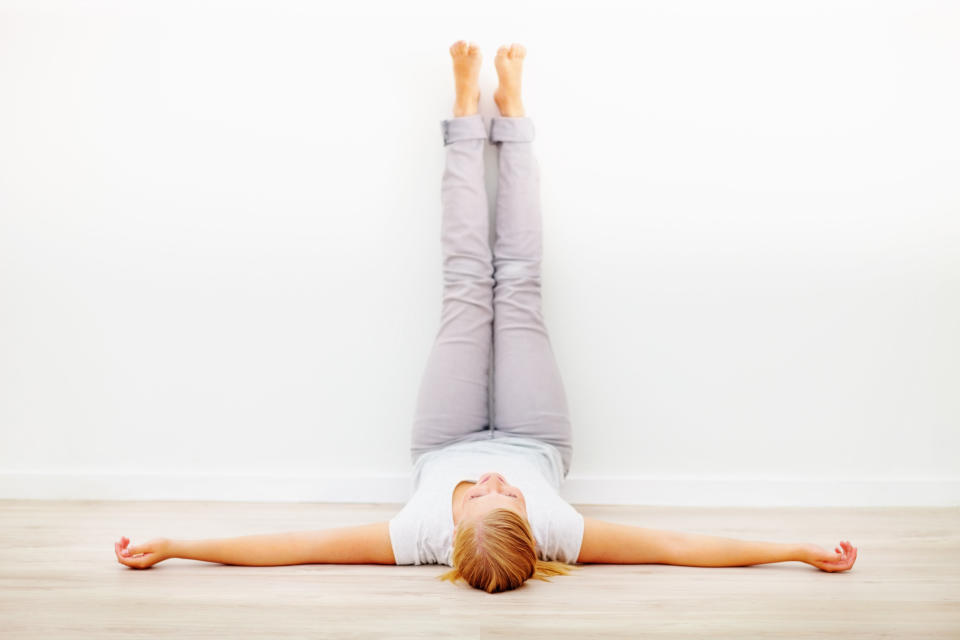
"When we flip the legs up, the blood can rush back down to the heart," says Bielkus. "It has a soothing quality."
Corpse Pose (Savasana)
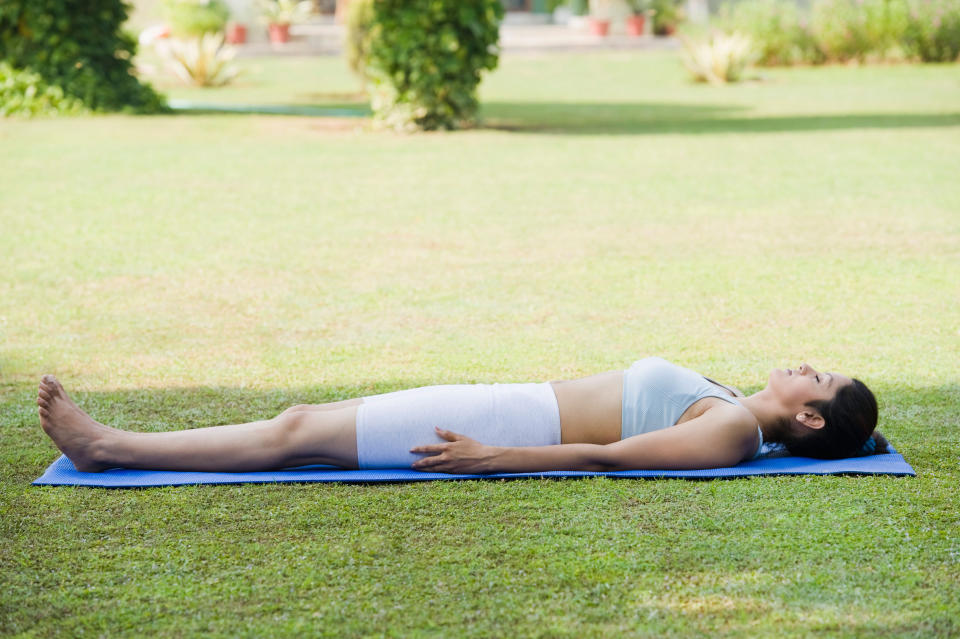
"By focusing the mind and bringing awareness in, you take the mind off of what is causing stress or restlessness," says Bielkus.
Supine Spinal Twist (Supta Matsyendrasana)
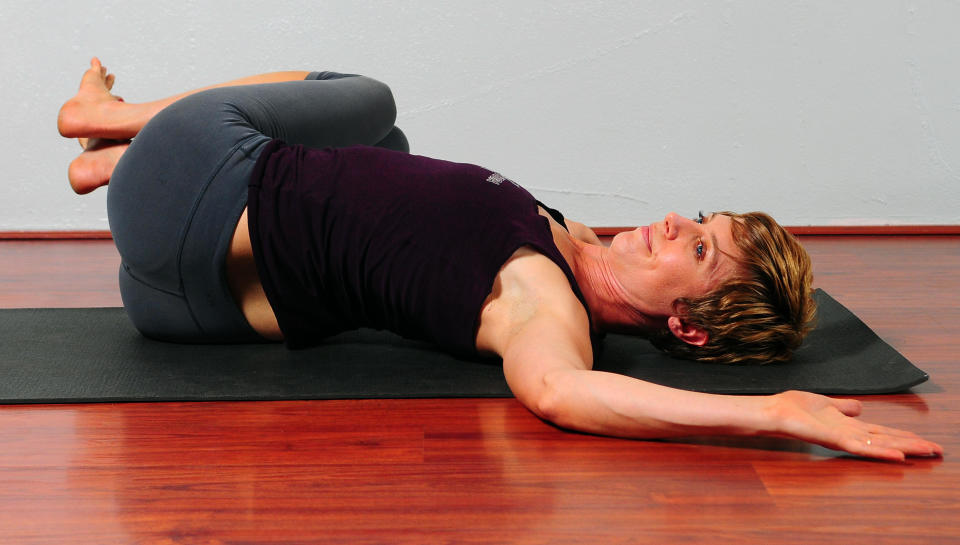
"Gentle twists relieve tension throughout the whole spine and also aid in digestion and help us rinse out some tension from the day," Bielkus says.
Seated Spinal Twist (Ardha Matsyendrasana)

Reclining Butterfly (Supta Baddha Konasana)
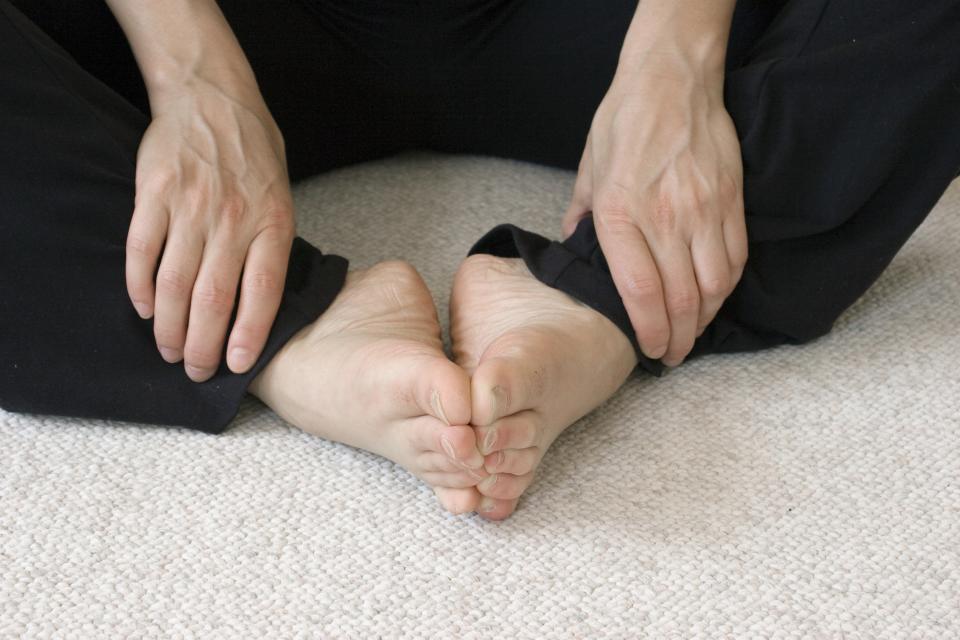
"Bring one hand to your heart and one hand to your belly," Bielkus says. "Breathe deeply observing the breath move in and out of the body."
Left Nostril Breathing (Surya Bhedana)
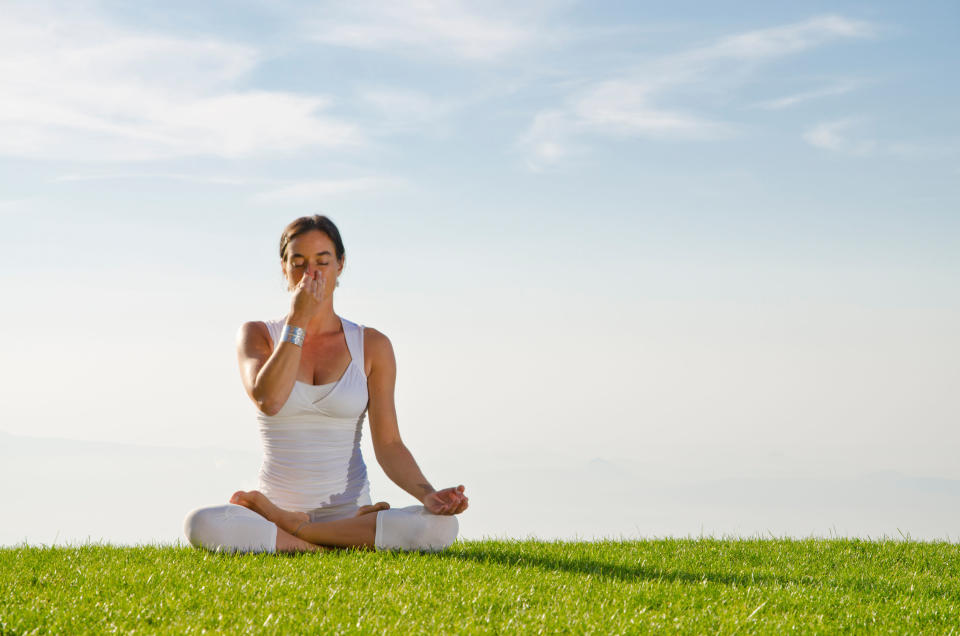
"If I can't sleep ... As soon as I've done three left nostril breaths, I'm out," says Bielkus. "It's really, really effective."
Love HuffPost? Become a founding member of HuffPost Plus today.
This article originally appeared on HuffPost.
